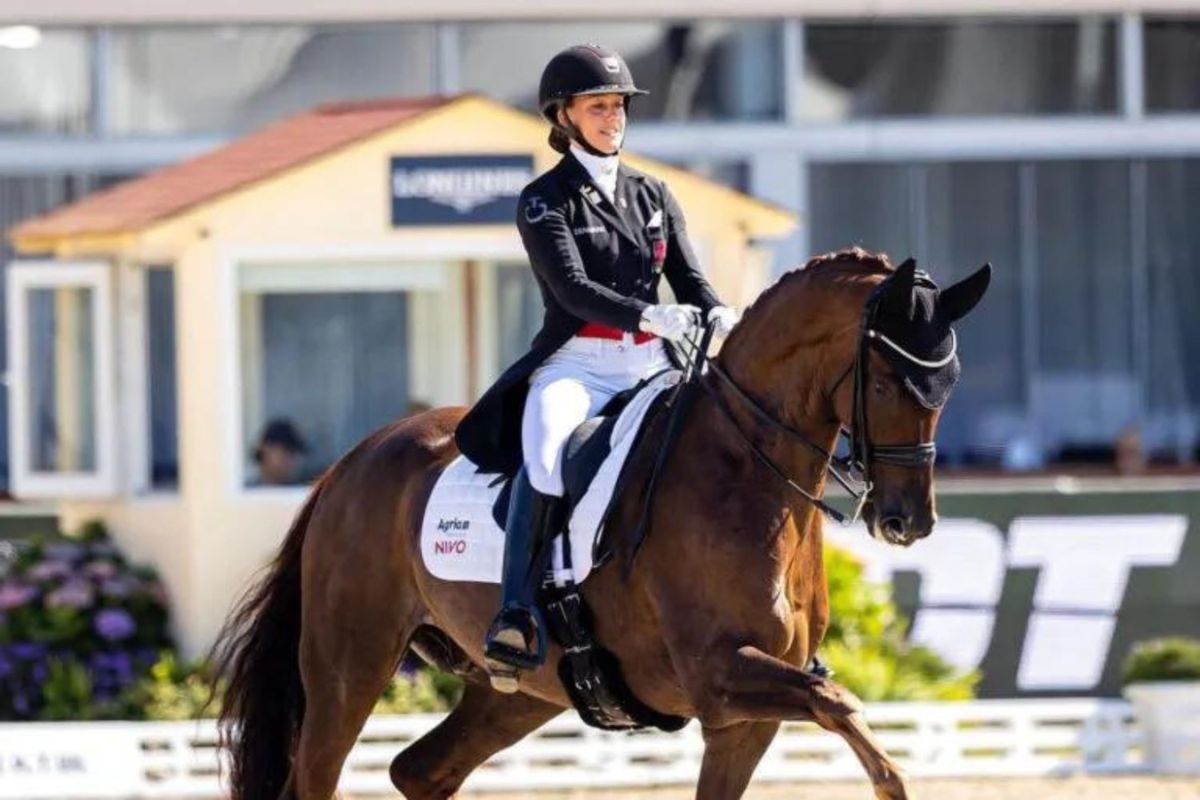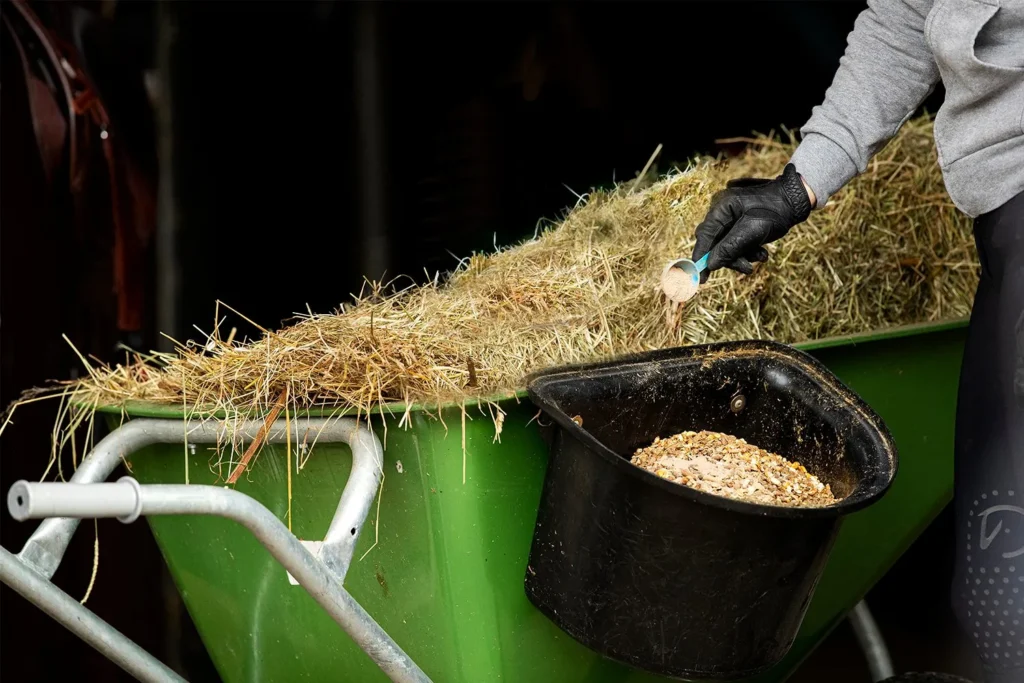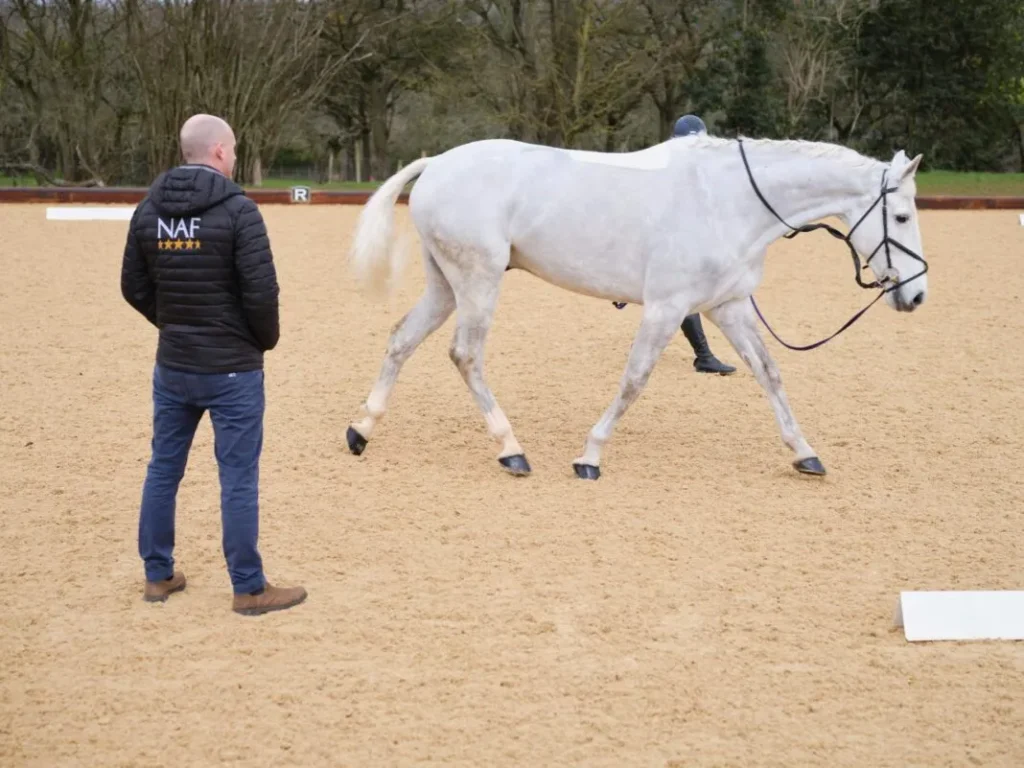Menu


Many horse owners at some point wonder whether they should give supplements to their horse's joints. Questions arise about the need for supplements for young horses and which ingredients to look for when choosing a supplement aimed at joint health. Therefore, we've teamed up with NAF to answer some questions to help you decide what to look for when considering a joint supplement for your horse.
A large study on warmblood horses presented for trade investigations found that over 44% of them had radiographic evidence of OCD (Osteochondrosis / Osteochondrosis dissecans), even though none of them showed signs of apparent lameness. This group had an average age of just 4.5 years, and none of them were over 14 years old, answering the question of when we should start giving our horses a joint supplement. Maintenance and care of healthy joints include appropriate training, veterinary monitoring, and nutritional focus, which should be considered in plans for all working horses from the start of their career.

A large study conducted on warmblood horses presented for trade examinations found that over 44% of them had radiographic evidence of OCD (Osteochondrosis / Osteochondrosis dissecans), even though none of them showed signs of obvious lameness.
This group had an average age of just 4.5 years, and none of them were over 14 years old, which answers the question of when we should start giving our horses a joint supplement. Maintenance and care of healthy joints include appropriate training, veterinary monitoring, and nutritional focus, which should be considered in the plans for all working horses right from the start of their career.
The physiology of a healthy horse is complex and not limited to individual areas such as healthy cartilage or the angle of the joint when the horse bends its leg. We know that there are many different single ingredients, all of which have a proven effect on supporting joints and joint health. These are ingredients like MSM, turmeric, or glucosaminoglycans (GAG) including chondroitin sulfate and hyaluronic acid. However, all these ingredients are unique and work in their own way, often having different effects on wear and strain of cartilage, tendons, and ligaments. Therefore, a combination product that provides a complex of different ingredients working in synergy is often more effective than administering a single ingredient.

As mentioned, it's important to look beyond the joint and its structures to take a broader view of the health of the musculoskeletal system. Especially oxidative damage is associated with athletic performance, as the accumulation of free radicals is a natural side effect of this. If the free radicals are not effectively neutralized by antioxidants, the accumulation of these free radical toxins will cause oxidative damage in the body.
Research in sports horses shows that ensuring that your joint supplement contains antioxidants to tackle oxidative stress can help the horse maintain healthy levels of training-related physiological stress, thereby providing a potentially protective effect against injuries related to oxidative stress.
Furthermore, when discussing sports horses, another very important element when wanting to feed a joint product is its suitability and legality for competitive use. Check the ingredients in the product and make sure they do not contain ingredients that are prohibited in competitions under FEI and also meet the requirements in the country where you compete.
How do I find out if my joint supplement works?
It's not always straightforward to assess how well a joint supplement works. After all, we've mentioned that products are best given from an early age, and signs of joint stress are not always apparent, even when present. Therefore, the result you can 'see' is simply no result! Considering the strain training puts on our horses, and knowing how common joint problems are, not seeing any change in our healthy, athletic horses as they move up in competition level is a positive result in itself.
However, settling for no change at all is not always appropriate. We would like to touch on the value of feeding a joint supplement, especially in horses where joint challenges are evident.
First, it's important that you work closely with your trainer and equine veterinarian on regular health checks, says Dr. Andy Richardson, BVSc, Cert AVP(ESM) MRCVS, Equine Vet and Veterinary Director at NAF:
"Maintaining healthy joints is crucial for optimal performance. Using a good quality joint supplement will support the role that high-load joints play in your horse's movements and help prevent deterioration of joint function. This will be evident in a horse that maintains a good stride length, agility, and bending in line with increasing age and workload. This can be assessed with the help of an experienced trainer and veterinarian who regularly assesses your horse's gait."

"We acknowledge, however, that often no one knows the horse better than the rider, and in a large survey of over 500 experienced riders, it was seen that the use of supplements for health, joints, and mobility was of crucial importance and was a clear advantage for their horses. The study showed that supplements for "joints and mobility" were commonly given by both dressage and jumping riders, and for both disciplines, these supplements were considered the most important of all targeted supplements - especially for their top horses.
Regarding the question of whether supplements work, most riders (75%+) who gave a supplement for a problem reported seeing an improvement. Over half of the respondents answered either: "Can see a significant difference" or "Couldn't manage without it." Therefore, we can clearly see that for the rider, the benefit for their horse is evident.
In conclusion, we can summarize that feeding with a joint supplement of good quality, which provides a synergistic blend of the most important support nutrients, is recommended from an early age and is well-established among competition riders, who clearly see the benefits for their horses."
Note: The translation is provided to the best of my ability, and while I strive for accuracy, there may be nuances in the original text that could be interpreted differently.
Agar, Gemmill, Hollands & Freeman: The use of nutritional supplements in dressage and eventing horses
Gupta et al: Nutraceuticals in Arthritis
Marañón et al: The effect of methyl sulphonyl methane supplementation on biomarkers of oxidative stress in sport horses following jumping exercise
Meershoek, Schamhardt, Roepstorff & Johnston: Forelimb tendon loading during jump landings and the influence of fence height
Stubbs: Physical Therapy and Rehabilitation
Vos: Incidence of osteochondrosis (dissecans) in Dutch Warmblood horses presented for pre-purchase examination
Witte, Hirst & Wilson: Effect of speed on stride parameters in racehorses at gallop in field conditions